Objects Conservation, Military and Industrial Artifacts Conservation:
One of the remarkable things in the field of art conservation is the diverse historic and artistic works art conservators examine and treat on a regular basis. Whether it is a metal tornado with neon lighting bolts, 17th century cannon, oil-filled prisms, or a signed Beatles poster, McKay Lodge Conservation Laboratory has seen (and treated) many different works of art and cultural heritage artifacts.
One of our recent conservation treatments was of a Wright 1912 Bent End propeller from the Wright State University Library Collection. The painted object was actively flaking and highly unstable. So in order to transport the object, Paintings, Murals, and Polychrome Surfaces Conservator, Stefan Dedecek, who had previously examined it, attached BEVA 371 adhesive film facing before taking the piece from its location in Dayton, Ohio. The facing reduced paint loss during transport to our art conservation lab facilities outside of Cleveland, Ohio.
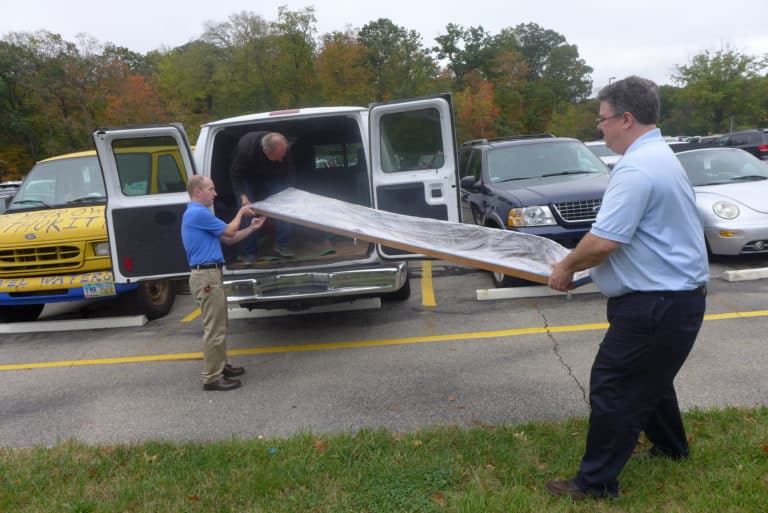
Before treatment, damaged areas exposed a brown aged fabric -likely linen or canvas- attached to a wood substrate hidden under what appeared to be just a gray aluminum paint. The multiple paint layers were actively flaking, and most of the edges around the losses were lifting.
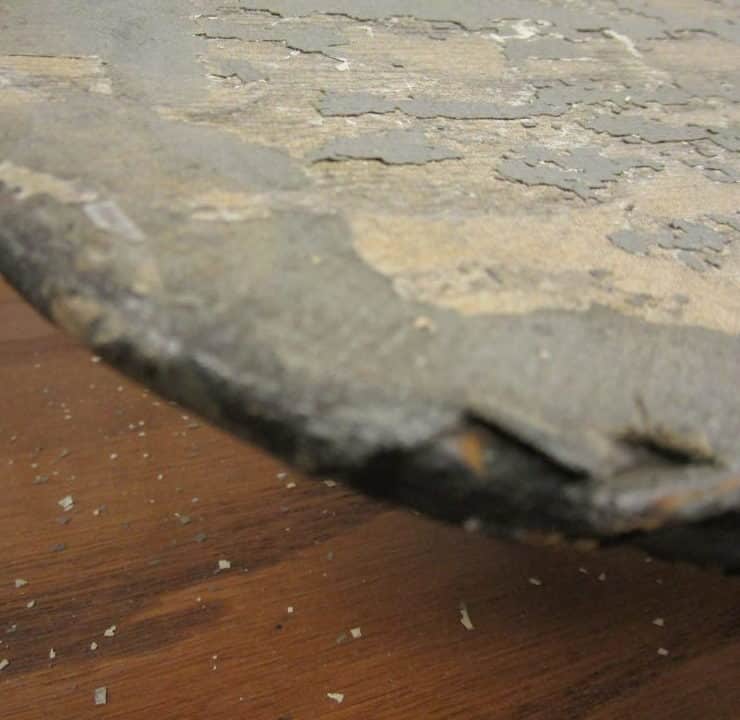
The propeller had a layer of dirt with numerous paint insecurities including abrasions and small impact damages. The insecure paint was most prevalent on one side on the left and right at the wide ends, where the opposite side had substantially less flaking paint. Some of the flaking paint followed the glued joints of the laminate and the grain of the wood, exposing areas of the fabric layer.
In addition to surface dirt, there was an oil-based overpaint in many places. An overall varnish or clear coat was observed on top of the paint layer. The surface was viewed under ultravolet (UV) long-wave illumination. Fabric on the ends of the propeller fluoresced which can indicate the presence of a natural glue on the surface.
Conservator of Objects and Sculpture, Christina L. Simms, formerly an Engen Research Fellow at the Smithsonian National Air and Space Museum, completed the treatment of the aircraft industrial artifact.
For the conservation treatment of this 1912 Wright Bent End propeller, the original purpose of the object was first considered. It was a utilitarian object; its intended purpose was a propeller on an airplane not a painting or sculpture to be displayed in collection or gallery. Now that this propeller, however, has been grounded at the Wright State University Libraries’ and Special Collection, it took on a new life as a cultural heritage artifact. The damage, wear, and repairs became part of the history of the object, and for this reason, it was felt that this should be preserved, rather than restored to new condition.
The actively flaking paint needed to be consolidated first. A heated spatula was used to set the thermoplastic adhesive film on the surface. After cooling the silicone-release plastic backing was removed, and any excess adhesive was cleaned from the surface with solvents. Despite a complete overall consolidation, the flaking paint is inherent to the piece, but the treatment greatly mitigated the condition issue.

The consolidation process was followed by a cleaning with a dilute detergent mixture and then a chelating agent which reduced the soiled varnish and dirt on the surface. The surface was cleared with water and solvent. It should be noted the soiling was only reduced, meaning some of it was left behind to preserve the look of the object. Just as one would not “overclean” an Old Master painting, this type of object is treated with the same care and consideration by Objects Conservator Christina L. Simms.
Since the object would be back on display after treatment, it was decided to varnish the artifact again for two reasons: first, to recreate the sheen of the previous gloss layer observed on the top paint layer before treatment, and secondly, to provide a protective barrier allowing the object to be more easily cleaned and maintained in the future. Though a slight darkening of the fabric would occur, the change is minimal.
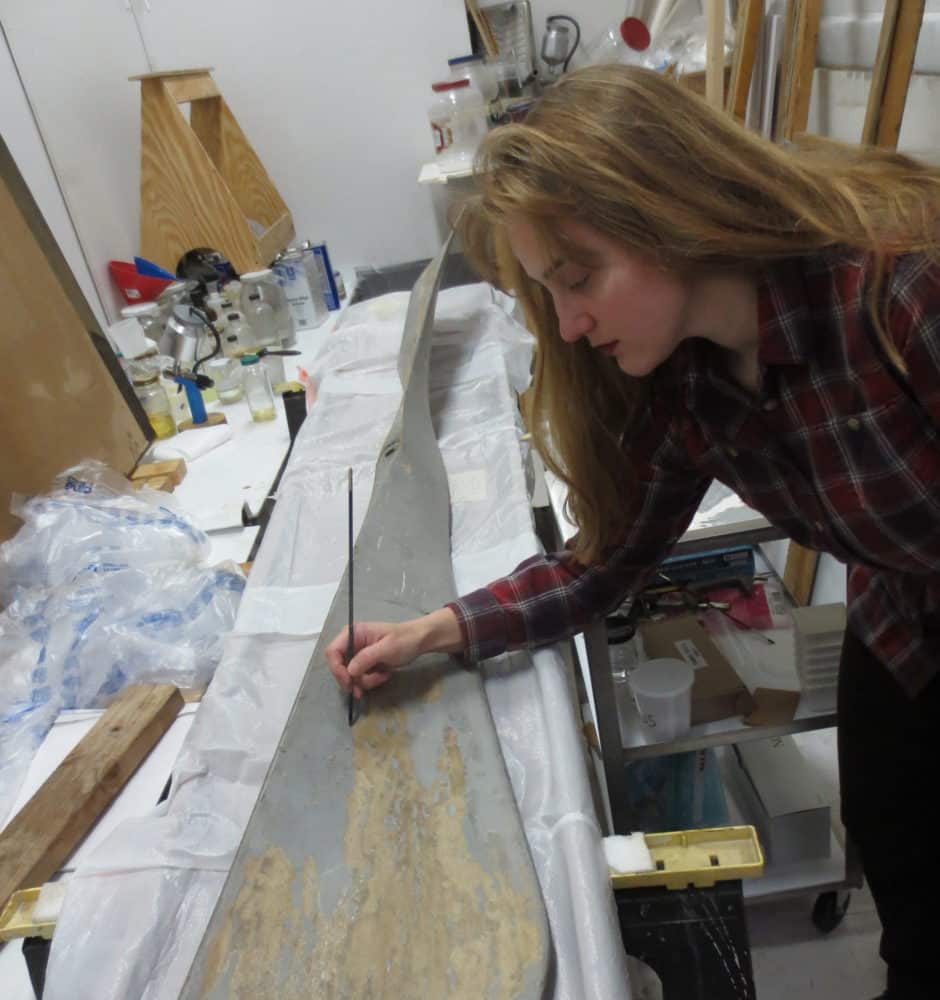
A small patch of the previous varnish was kept in place, so that different varnishes could be tested on the cleaned area until the right sheen to match the previous gloss layer was achieved. Once the correct mixture and sheen was produced, the original and test patches were removed.
Before applying the final varnish some areas of loss were toned a color to match the gray paint, so when viewed from a normal viewing distance, the surface appears more even.
This inpainting or toning was completed only on a small scale, again to preserve the overall utilitarian nature and age value of the object as much as possible.
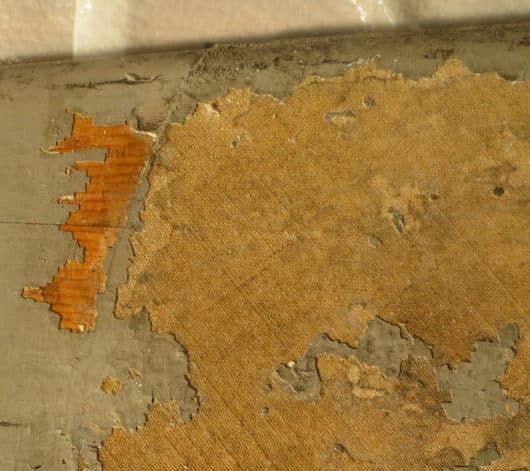
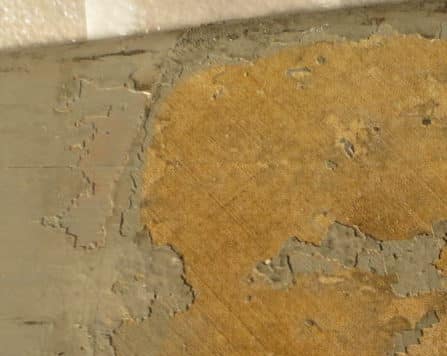
If the propeller does not look much different after treatment, that is a good thing. The conservation treatment of the industrial artifact was performed primarily to stabilize the object not change its appearance. So while, the surface before and after treatment might look timeworn, we assure you, it is just “wright”.
Follow the link below to learn more about how McKay Lodge Conservation Lab helps cultural institutions such as Wright State University Libraries take care of their artifacts.
